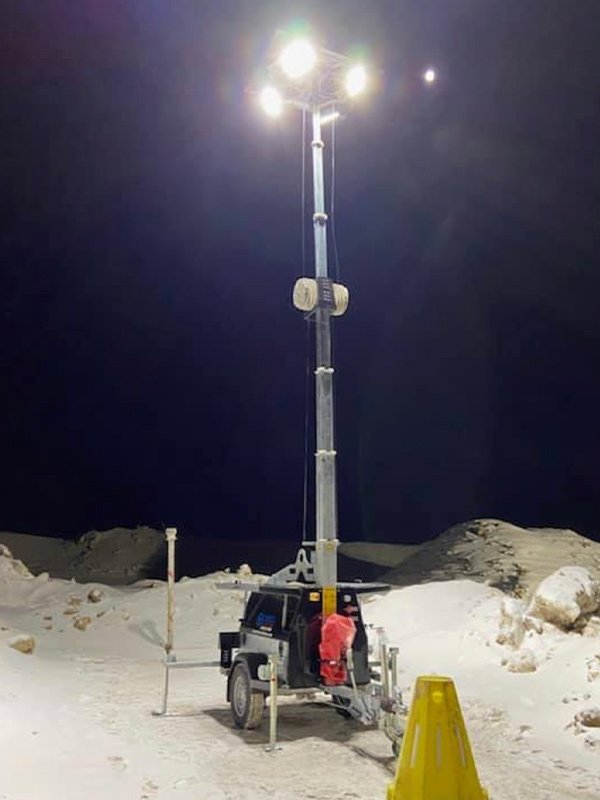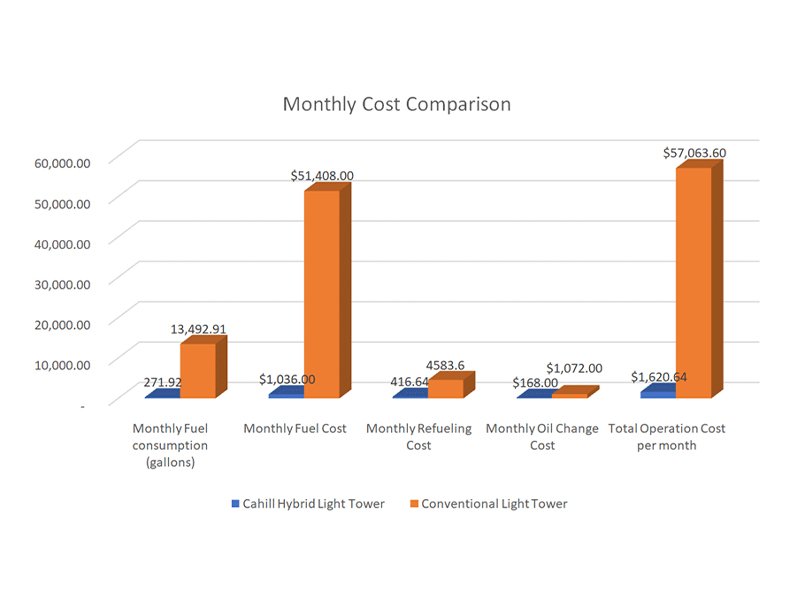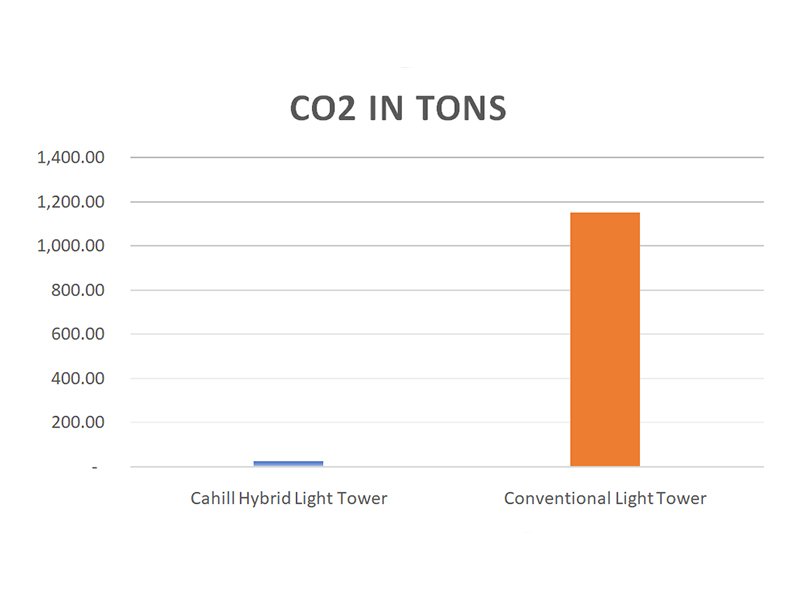Light Tower Rentals Edmonton
A large infrastructure project in Western Canada needed a sustainable lighting solution. With limited daylight in the winter and shoulder seasons, reliable lighting was essential to get construction activities done safely. A few months into the construction, the contractor experienced a few issues with their fleet of conventional metal halide and LED light towers. The light towers on site needed frequent refuelling, leading to the following problems:
- Increased traffic and congestion
- High fuel usage
- High emissions
- Increased chances of spills and accidents
The fuel costs and threat of accidents prompted the contractor to look for better technology.
Feeling the need to save costs, reduce the environmental impact, and avoid accidents, the contractor decided to replace the conventional light towers on-site with Cahill’s Solar Hybrid Light Towers.
The solar-powered light tower featuring a backup diesel generator eliminated all the problems the contractor faced.
Capable of running 35 days or more before refuelling, the light towers led to a sharp decrease in refuelling visits. Considering the site’s remoteness, this led to considerable cost savings from:
- Lower fuel usage
- Lower frequency of refueling
- Less oil changes
- Reduced maintenance needs



Since the project used multiple light towers, these savings were tremendous!!
Since the site was near protected forests, it was important that the project also had a minimal environmental impact. Clean technology virtually eliminates emissions and makes it safe for the environment and workers.
Cahill’s hybrid light towers helped the customer achieve this by steeply reducing the carbon footprint on site. With 83% less engine run time than conventional technology, Cahill’s hybrid light tower is the safest lighting option available to industrial customers.
Aside from performance, Cahill’s hybrid light towers are also convenient. Setup takes only minutes, and the controls are simple and intuitive. The light towers also have an automatic day/night sensor that detects natural light and turns the light tower off without manual intervention.
Throughout the project, the construction contractor saved tens of thousands of dollars in operational costs while simultaneously decreasing the chances of accidents and fuel spills. Even in the most extreme conditions in the peak of the winter, when there was minimal daylight, and temperatures dipped below -40 degrees, the light towers saw no dip in performance.







